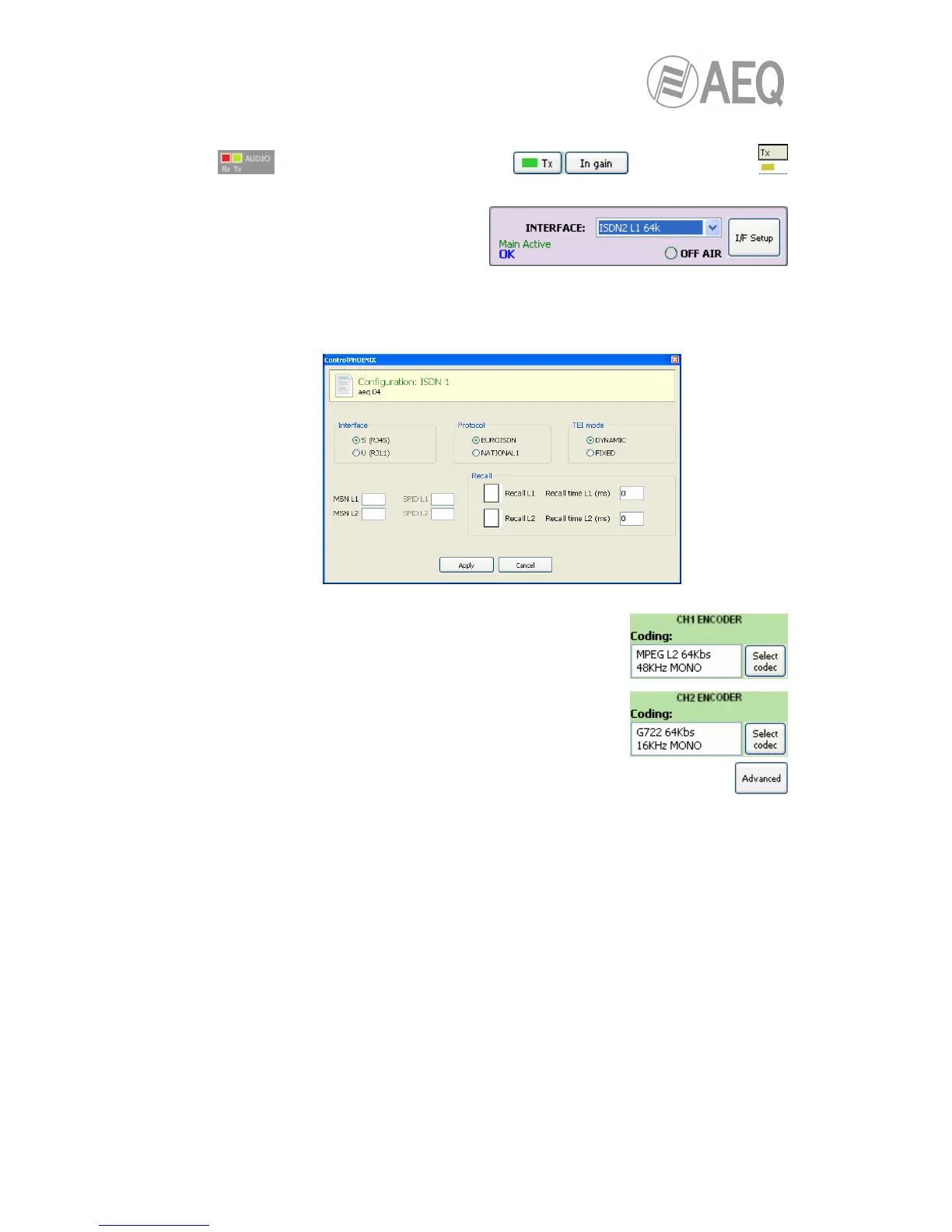• Check that there is incoming audio to the channel (CH1 or CH2) we are going to use to
establish the communication: the “Tx“ indicator in the individual codec control window
, in the general configuration screen and in the list view
will change to green .
• Go to general configuration screen and
configure “INTERFACE” as “ISDN1
L1+L2 128k”, “ISDN1 L1 64k” or
“ISDN1 L2 64k”.
• Enter “I/F Setup“ and configure the type of physical interface will be selected (S or U),
the ISDN protocol (EuroISDN or National 1) and whether the TEI is dynamic or fixed.
We will also indicate the MSN numbers (SPID if protocol is National 1), whether we
want automatic recall or not and its timing.
• Return to the general configuration screen, check that the
selected coding mode in the green “ENCODER“ area
corresponding to that channel (CH1 or CH2) is correct, or
otherwise click on “Select codec” to change it. Make sure that
the mode you select is compatible with the communications
interface selected, especially as regards the associated bit
rates.
• Decide whether you will use the advanced automatic connection options or not:
o “Autoanswer”: Automatic call answering for all incoming calls, or only those
corresponding to a predefined caller.
o “Auto hang-up”: Automatic hang-up whenever audio packets are missed for a given
time. This option is not available for ISDN and V35.
o “Permanent call and backup settings”: Allows you to activate automatic redial and
configure a backup interface and define the time and number of retries before
switching, the number or unit to call to and the used encoding. You can select no
backup interface (“NONE”) and activate the same way the “Auto-Redial” check box
when you simply want a call to be retried in case of connection falls.
The “On power up” check box and the associated drop-down menu allow you to
activate the automatic redial when equipment starts up. This option should be
activate for both peers of the connection for RTP or V35 communications and only
on the calling side for ISDN or SIP calls.
o “Apply audio profile to incoming calls”: allows you to filter the SIP calls depending
on the encoding profile of the receiver. This option is not applied for ISDN
communications.
